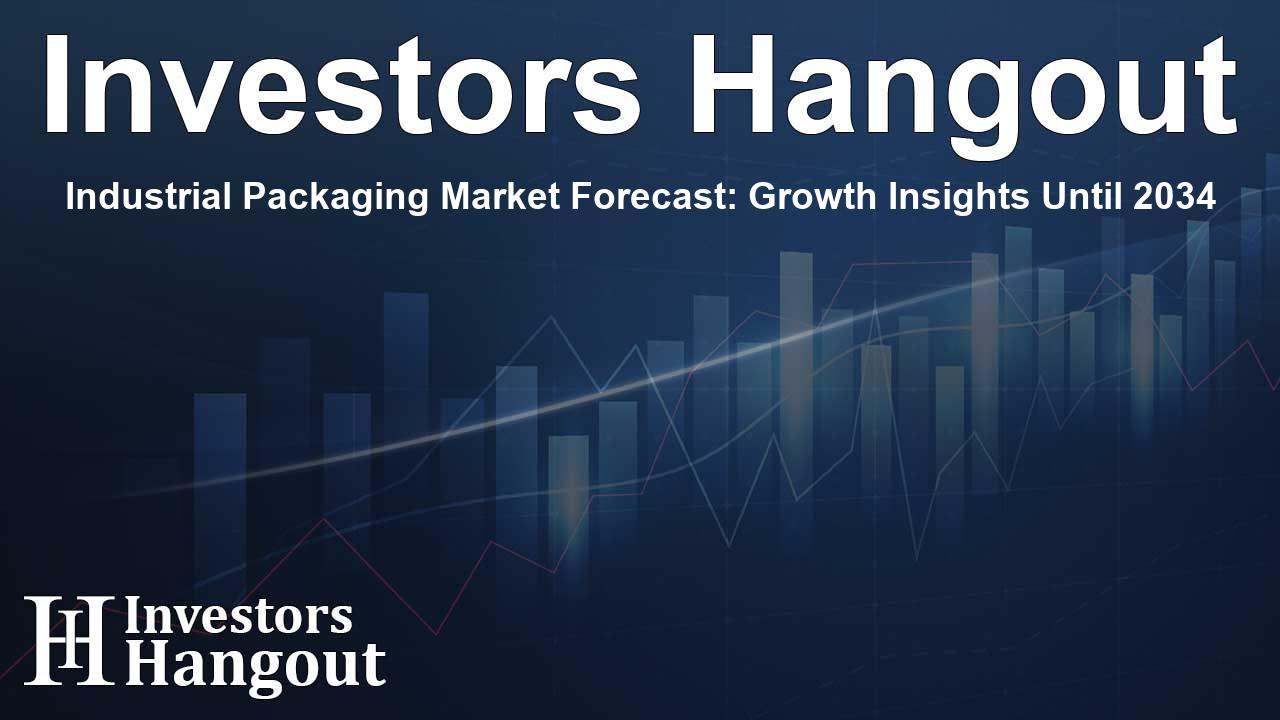Industrial Packaging Market Forecast: Growth Insights Until 2034

Insights into the Industrial Packaging Market
The landscape of the industrial packaging market is shaped by the rapid pace of industrialization and the increasing demand for efficient and durable packaging solutions. There’s a notable emphasis on optimizing supply chains, which is further stimulated by regulatory support and initiatives aimed at sustainable packaging practices. Investments in recyclable materials, automation technologies, and smart packaging systems are also on the rise. Additionally, the growth in global trade and e-commerce has driven the need for advanced protective and bulk packaging solutions, leading to an upward trend in market expansion. Innovation and sustainability efforts continue to play a vital role in defining the future of industrial packaging worldwide.
Current Market Situation
According to industry experts, the industrial packaging market was valued at $56.3 billion and is projected to reach a remarkable $114.8 billion by 2034. This growth trajectory highlights a compound annual growth rate (CAGR) of 5.5% from the mid-2020s onward. The expansion of the manufacturing sector contributes significantly to this trend, as companies innovate their packaging practices to enhance product protection and optimize logistics while minimizing their environmental footprint. However, it is essential to recognize the challenges of fluctuating raw material prices and regulatory compliance, particularly affecting emerging economies. Nevertheless, significant prospects exist in adopting recyclable materials and biodegradable packaging as well as smart packaging innovations that enhance supply chain efficiency.
Key Drivers and Opportunities
One of the major drivers of market growth is the increasing consumer demand for sustainable packaging options. The 'paperization' trend across various industries signifies a transition towards recyclable materials, driven by consumer willingness to pay more for environmentally friendly solutions. Additionally, the shift towards e-commerce has created opportunities for smarter packaging solutions that allow for enhanced traceability and engagement, aligning with the needs of modern consumers.
Restraints Impacting Market Growth
Conversely, the industrial packaging market faces certain restraints that could hinder its progress. The cost volatility of raw materials can disrupt manufacturing and logistics. Furthermore, complex return logistics present challenges that companies must navigate carefully. Industry operators are adapting to these pressures while seeking creative solutions to mitigate their impacts and navigate downturns in demand.
Market Segmentation
As the market evolves, specific segments are becoming more prominent. By product type, crates and totes emerged as the market leaders, capturing a significant portion of revenue. However, the drums segment is witnessing a faster growth rate, reflecting shifting industry needs. In terms of materials, the plastic segment currently holds the largest share of the market, although the fiber segment is expected to grow rapidly.
Applications in Industrial Packaging
The applications of industrial packaging are diverse. The chemical and pharmaceuticals segment has historically commanded a large share, but the food and beverages sector is rapidly expanding, driven by changing consumer preferences towards packaged goods.
Regional Analysis of Market Trends
Geographically, the Asia-Pacific region continues to dominate the market, accounting for nearly half of total industrial packaging revenue. This market strength is bolstered by the expanding manufacturing capabilities in the region, catering to both domestic and international demands.
Leading Market Players
Key players in the industrial packaging market include prominent companies such as Grief, Inc., Mondi PLC., and Amcor Limited. These firms are adopting various strategies, including expansion and product innovation, to enhance their market positions and strengthen their operational capacities across diverse regions. This competitive landscape indicates continual evolution and adaptation within the market.
Frequently Asked Questions
What is the current value of the industrial packaging market?
The industrial packaging market is estimated to be valued at $56.3 billion and projected to reach $114.8 billion by 2034.
What are the key drivers of growth in the industrial packaging market?
Key drivers include rapid industrialization, demand for sustainable packaging, and the growth of e-commerce.
Which segments are leading the industrial packaging market?
The crates and totes segment currently leads the market, while drums are expected to show the fastest growth rate.
What are the main challenges faced by the industrial packaging industry?
Main challenges include fluctuating raw material prices and regulatory compliance in different regions.
How does sustainability impact the industrial packaging market?
Sustainability initiatives are driving investments in recyclable and biodegradable packaging, aligning with consumer preferences for eco-friendly options.
About The Author
Contact Caleb Price privately here. Or send an email with ATTN: Caleb Price as the subject to contact@investorshangout.com.
About Investors Hangout
Investors Hangout is a leading online stock forum for financial discussion and learning, offering a wide range of free tools and resources. It draws in traders of all levels, who exchange market knowledge, investigate trading tactics, and keep an eye on industry developments in real time. Featuring financial articles, stock message boards, quotes, charts, company profiles, and live news updates. Through cooperative learning and a wealth of informational resources, it helps users from novices creating their first portfolios to experts honing their techniques. Join Investors Hangout today: https://investorshangout.com/
The content of this article is based on factual, publicly available information and does not represent legal, financial, or investment advice. Investors Hangout does not offer financial advice, and the author is not a licensed financial advisor. Consult a qualified advisor before making any financial or investment decisions based on this article. This article should not be considered advice to purchase, sell, or hold any securities or other investments. If any of the material provided here is inaccurate, please contact us for corrections.
